Typical Heat Transfer Coefficient Values
The U-factor or U-value is the overall heat transfer coefficient that describes how well a building element conducts heat or the rate of transfer of heat in watts through one square metre of a structure divided by the difference in temperature across the structure. A heat transfer area m 2 ft 2 U k s Coefficient of Heat Transfer Wm 2 K Btuft 2 h o F dT t 1 - t 2 temperature gradient - difference - over the material o C o F Calculate Overall Heat Transfer Coefficient - U-value.
Heat Exchangers The Overall Heat Transfer Coefficient Hydraulics And Pneumatics
Calculations are for F O 00048 at 30 s and F O 0096 at 600 s for a thickness of L 003 m and a typical α 144 x 107m2s for bio.
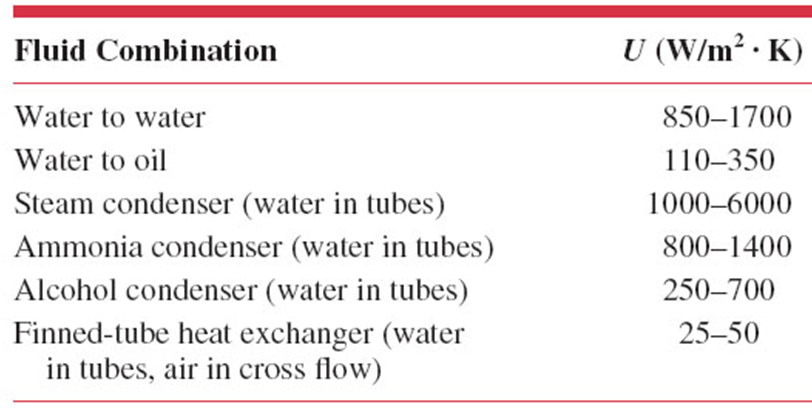
Typical heat transfer coefficient values. The Stefan-Boltzmann constant σ has a value of 56710-8 Wm 2 K 4. The heat transfer coefficient for a given heat exchanger is often determined empirically by measuring all of the other parameters in the basic heat exchanger equation and calculating U. The rate of heat transfer P energy per unit time is proportional to the temperature difference and the contact area A and inversely proportional to the distance d between the objects.
The Rayleigh number can be expressed in terms of the Prandtl and the Grashof numbers through the relation RaPr Gr. Calculate the heat transfer per unit time in watts needed to warm the incoming cold air by 100 ºC thus replacing the heat transferred by convection alone. Suppose that a moderately-sized house has inside dimensions 120m180m300m high and that all air is replaced in 300 min.
The Basic Design Equation and Overall Heat Transfer Coefficient The basic heat exchanger equations applicable to shell and tube exchangers were developed in Chapter 1. The overall heat transfer coefficient is used to calculate total heat transfer through a wall or heat exchanger construction. Typical ranges of U values for various heat exchangerfluid combinations are available in textbooks handbooks and on websites.
The heat transfer coefficient or film coefficient or film effectiveness in thermodynamics and in mechanics is the proportionality constant between the heat flux and the thermodynamic driving force for the flow of heat ie the temperature difference ΔT. Table 42 gives approximate values for the heat transfer coefficient for several fluids that might be used to cool the mold and its molten contents. There is an air film next to surface that has the same effect as another building material with its own value of conductance and resisting heat.
T w is the wall temperature and T r the recovery or adiabatic wall temperatureThe above is also true of the Boundary Layer energy equation which is a particular case of the general energy equation. The convective heat transfer coefficient depends on fluid properties and. Ao and Ai are outer and inner surface area values for the tubes k w is the resistance value for the tube wall.
Assumes constant surface heat transfer coefficient h 272 Heat Transfer from Fins To determine the total heat loss from fin we use the Fouriers Law at the base of the fin 0 x fin x T x q Ak 28 Figure 10. The variables ε is the surface emissivity of the heat sink. That is how effective they are at preventing heat from transmitting between the inside and the outside of a building.
Typical aluminum fins have density from 300 up to 800 fins per meter 0105 mm thickness and up to 25 cm in height with an increase in heat transfer surface up to 20 times the base surface. In cases of combined heat transfer for a heat exchanger there are two values for h. In other words heat exchanger fouling reduces the overall heat transfer rate.
The elements are commonly assemblies of many layers of components such as those that make up wallsfloorsroofs etc. The transfer of heat from air to a surface and from surface to air is called surface conductance or film conductance or film coefficient. U-values - Designing Buildings Wiki - Share your construction industry knowledge.
Convective Heat Transfer Coefficients Table Chart The following table charts of typical convective convection heat transfer coefficients for fluids and specific applications. Where the heat transfer coefficient α is only a function of the flow field. Heat Transfer Engineering Thermodynamics.
The overall heat transfer coefficient depends on the fluids and their properties on both sides of the wall the properties of the wall and the transmission surface. For example heat transfer in a steam generator involves convection from the bulk of the reactor coolant to the steam generator inner tube surface conduction through the tube wall and convection from the outer tube surface to the secondary side fluid. Convection is heat transfer by the macroscopic movement of mass.
Example - Conductive Heat Transfer. It is clear from the equation that as the fouling factors either on shell or tube side increase overall heat transfer coefficient will decrease. Typical values are listed in the article The importance of radiation in heat sink design.
For a larger Rayleigh number heat transfer by convection has to be considered. Under steady conditions heat transfer from the exposed surfaces of. In Equation 513 drop off rapidly for values of time.
Convective Heat Transfer Coefficients Table Chart. The terms in the series n 0 1. Here we will cite only those that are immediately useful for design in shell and tube heat exchangers with sensible heat transfer on the shell-side.
U-values sometimes referred to as heat transfer coefficients or thermal transmittances are used to measure how effective elements of a buildings fabric are as insulators. When fluids encounter solid boundaries the fluid in contact with the wall is at rest and viscous effects thus. The convection heat transfer coefficient h is a measure of the resistance to heat transfer across a thin near-stagnant fluid layer between the bulk of the fluid and the solid surface.
Typical values of heat transfer coefficient. Convective heat transfer coefficient. The overall heat transfer rate for combined modes is usually expressed in terms of an overall conductance or heat transfer.
Next the radiation heat transfer from the area A 2 given by equation 10 is calculated. Convection can be natural or forced and generally transfers thermal energy faster than conduction. When the Rayleigh number is small typically heat transfer occurs by conduction in the fluid.

Convection Heat Transfer Coefficient An Overview Sciencedirect Topics

Heat Exchanger Heat Transfer Coefficient Heat Transfer Coefficient

Average Heat Transfer Coefficient Of Copper Foam And Aluminum Metal Download Table

Values Of Heat Transfer Coefficient And Operating Parameters For Each Download Scientific Diagram
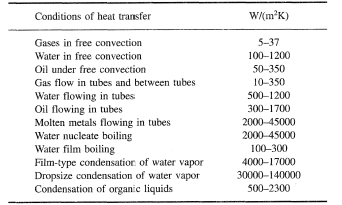
Overall Heat Transfer Coefficient Table Charts And Equation Engineers Edge Www Engineersedge Com
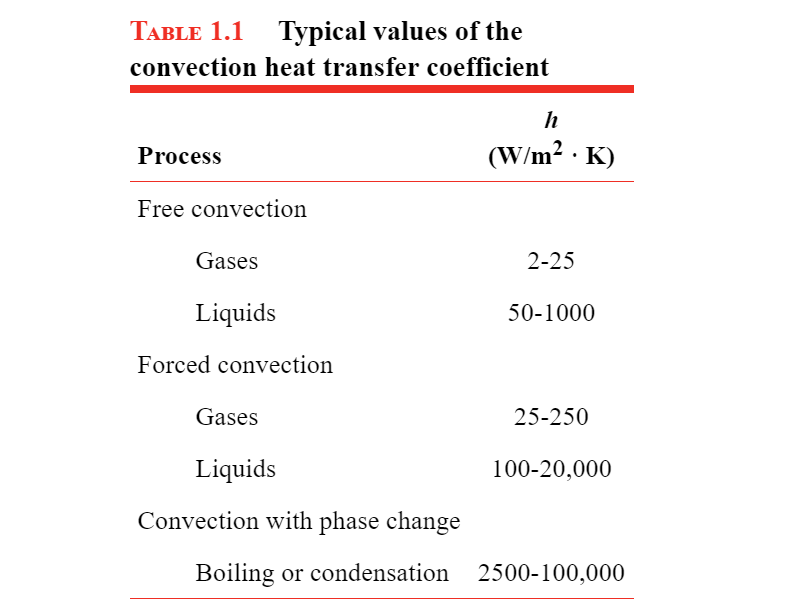
1 Using The Typical Minimum Free Convection Heat Chegg Com

Heat Exchangers Introduction To Chemical And Biological Engineering
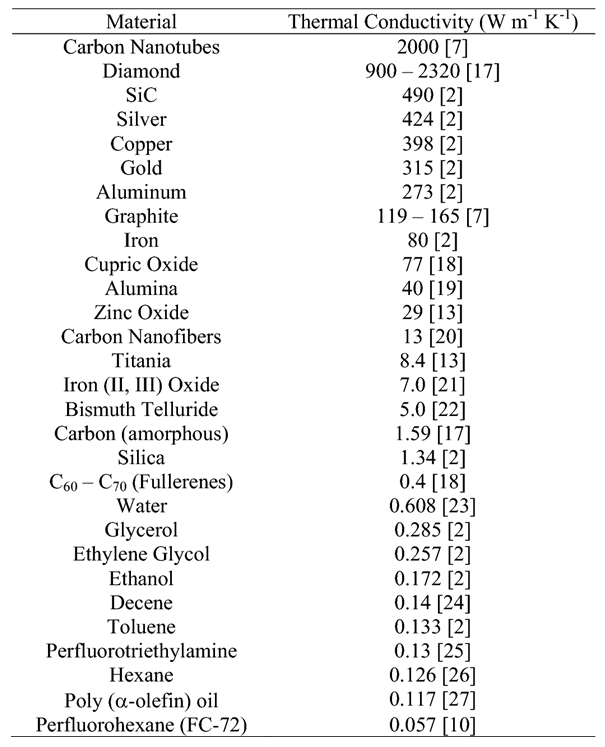
Heat Transfer Introduction To Chemical And Biological Engineering
Approximate Overall Heat Transfer Coefficient Oil Gas Process Engineering
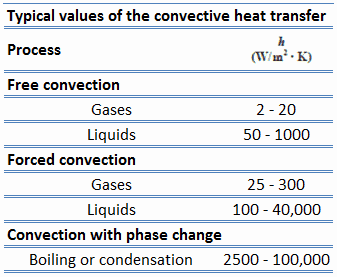
What Is Convective Heat Transfer Coefficient Definition


Posting Komentar untuk "Typical Heat Transfer Coefficient Values"